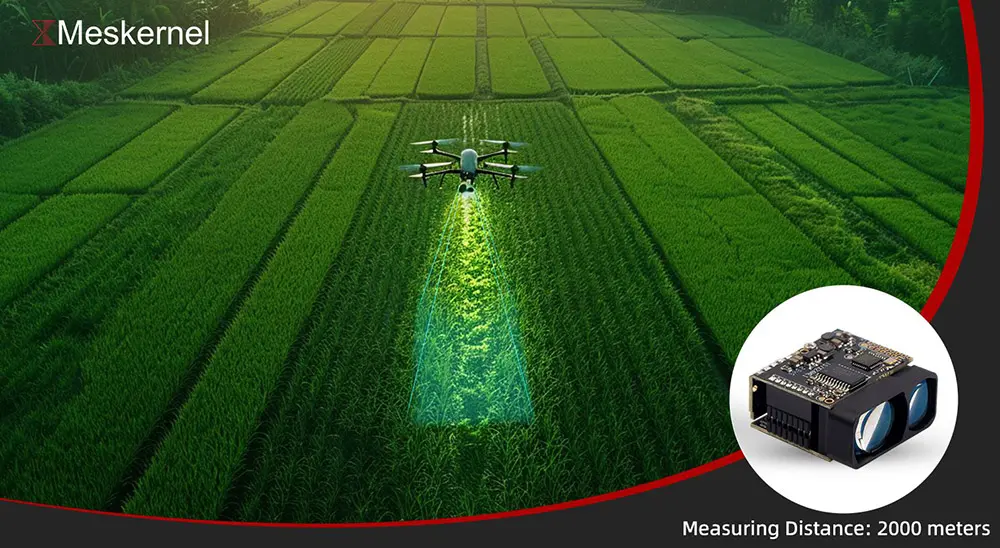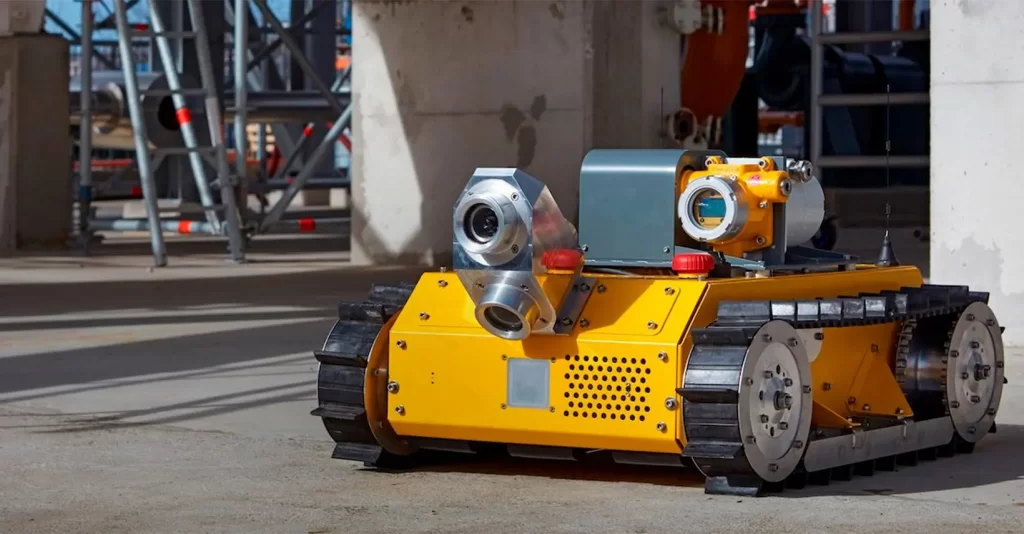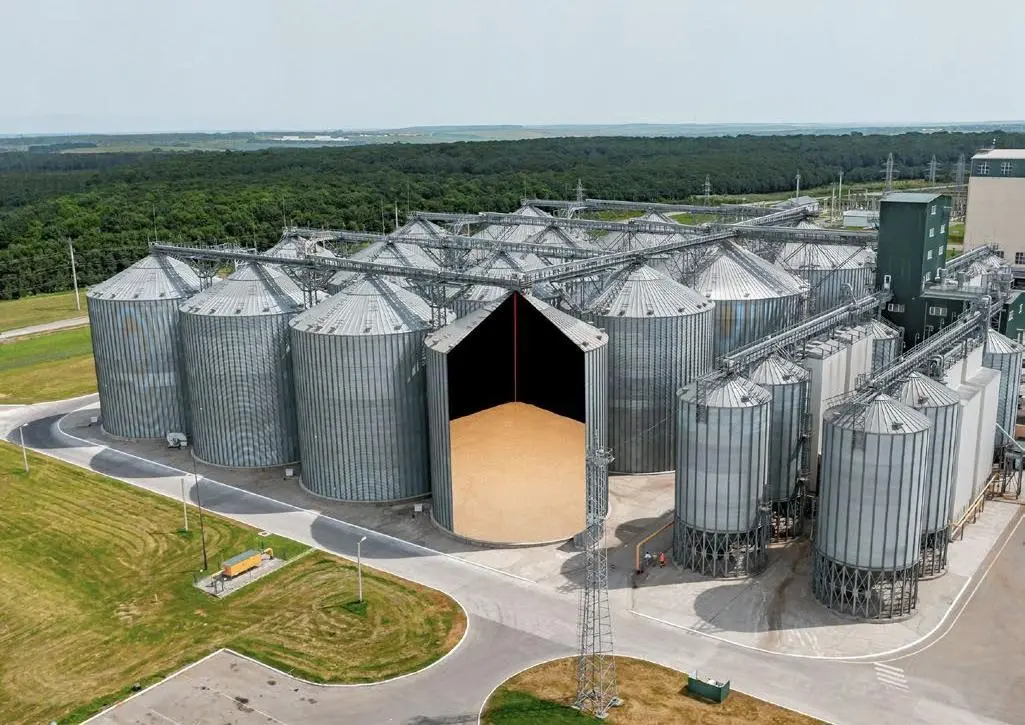Tanto si está construyendo un robot inteligente, un dron autónomo o un medición de la distancia proyecto, seleccionando un alcance láser compatible con ESP32 es fundamental para el rendimiento y la facilidad de integración. En esta guía, vamos a explorar cómo elegir el mejor módulo, comparar varias opciones de alta precisión, y explicar las aplicaciones del mundo real para ESP32 sensores láser.
🔧 ¿Por qué usar ESP32 con un módulo de alcance láser?
El microcontrolador ESP32 es ampliamente utilizado para IoT, robótica y sistemas embebidos debido a su:
- Procesador de doble núcleo
- Conectividad Wi-Fi y Bluetooth
- Amplias opciones de interfaz GPIO y serie (UARTI2C, SPI)
Emparejar el ESP32 con un láser sensor de distancia permite medir distancias con precisión y en tiempo real en distancias cortas y largas, lo que resulta ideal para medir objetos. detecciónprevención de colisiones, medición del nivel de líquidos y cartografía.
🔍 Factores clave a la hora de seleccionar un módulo de telemetría láser para ESP32
Al seleccionar un módulo de medición láser compatible con ESP32, tenga en cuenta:
✅ 1. Interfaz de comunicación
ESP32 soporta:
- UART: De serie y fácil de implantar
- I2C: Bueno para múltiples sensores con menos pines
- PWM o Analógico Salida: Más sencillo pero con precisión limitada
Consejo: Elija un módulo que soporte UART o I2C para obtener mejores resultados con ESP32.
✅ 2. Rango de medición
Seleccione un sensor en función de los requisitos de alcance de su proyecto:
- 0,1-10 metros: Robótica de interior, detección de nivel
- 10-100 metros: Aplicaciones exteriores, cartografía de gama media
- 100-2000 metros: Vigilancia de largo alcance, altimetría con drones
✅ 3. Frecuencia de actualización
- Una frecuencia de actualización alta (>3 Hz) es mejor para objetos en movimiento y control en tiempo real.
- Asegúrese de que su firmware ESP32 maneja la velocidad de datos de manera eficiente.
✅ 4. Tamaño y alimentación
- Las placas ESP32 suelen alimentarse con 3,3V o 5V.
- Asegúrate de que tu módulo se ajusta al nivel de tensión y a los requisitos de corriente.
📊 Módulo de alcance láser compatible con ESP32 superior (De Meskernel).
Echemos un vistazo a módulos reales de Meskernel que son totalmente compatibles con ESP32, incluidas las especificaciones técnicas y las notas de integración.
| Modelo | Gama | Interfaz | Precisión | Tasa de actualización | Notas |
|---|
| LDJ-4Hz | 0.03-120m | UART | ±3 mm | 4 Hz | Ideal para proyectos ESP32 compactos, salida UART estable |
| LDJ-20Hz | 0.03-100m | UART / I2C | ±3 mm | 20 Hz | Mayor frecuencia de actualización, mejor para sistemas dinámicos |
| Serie TC25 | 3-1500m | UART / RS232 / RS485 | ±1m | 3 Hz | Carcasa impermeable de largo alcance para uso en exteriores |
| Serie TS1224 | 5-2000m | UART | ±1m | 3 Hz | Lo mejor para un alcance ultralargo UAV y medición de campo |
| OEM TOF Módulos | 0.01-25m | UART / I2C | ±1 mm | 30 Hz | Módulos ToF compactos, perfectos para robots & drones |
👉 Consejo profesional: Para la cartografía de robots en tiempo real, el módulo LDJ-20Hz ofrece el mejor equilibrio entre velocidad y precisión. Para altimetría de drones o vigilancia de largo alcance, utilice la serie TS1224.
💡 Aplicaciones típicas con ESP32 + sensor láser.
Estos son algunos proyectos en los que un módulo láser compatible con ESP32 puede brillar:
🤖 1. Evitación de obstáculos en robótica
Utilice el módulo LDJ-4Hz o TOF para detectar la distancia en tiempo real y cambiar de dirección en función de los datos de proximidad.
🚁 2. Control de altitud de UAV
Sensores de largo alcance como TC25 o TC1224 puede medir con precisión la distancia al suelo, lo que ayuda a estabilizar el despegue y el aterrizaje.
🧪 3. Control de nivel industrial
Supervise los niveles de líquidos o materiales en los tanques mediante un módulo con capacidad para 100 m+, combinado con el Wi-Fi de ESP32 para enviar alertas.
🏗️ 4. Infraestructuras inteligentes
Integre un módulo láser en aplicaciones IoT como la supervisión de puertas, el posicionamiento de ascensores o la detección de desplazamientos estructurales.




🔌 Ejemplo de cableado: ESP32 + LDJ-4Hz (UART)
LDJ-4Hz Módulo Láser ESP32 Board
---------------------- ---------------
VCC (5V) VIN o 5V
GND GND
TXD RXD (GPIO16)
RXD TXD (GPIO17)
Utilice un desplazador de nivel si el sensor láser emite 5V y su ESP32 funciona con una lógica de 3,3V.
Ejemplo de código Arduino (Lectura UART)
#include
HardwareSerial miSerial(1);
void setup() {
Serial.begin(115200);
mySerial.begin(115200, SERIAL_8N1, 16, 17); // RX=16, TX=17
}
void loop() {
if (mySerial.available()) {
String distancia = mySerial.readStringUntil('\n');
Serial.println("Distancia: " + distancia);
}
}
¿Dónde comprar módulos láser compatibles con ESP32?
Meskernel ofrece una amplia gama de módulos de medición láser compatibles con ESP32, desde módulos ToF compactos hasta sensores industriales de largo alcance.
👉 Explorar los módulos de telemetría láser"
Si no está seguro de qué modelo se adapta mejor a su proyecto, su equipo le ofrece asesoramiento técnico gratuito y puede ayudarle a elegir el que mejor se adapte a sus herrajes.
📌 Reflexiones finales
El uso de un módulo de alcance láser compatible con ESP32 abre un mundo de posibilidades, desde la navegación autónoma hasta la detección industrial. Tanto si necesita un sensor compacto para un robot de bricolaje o un módulo de alta potencia para aplicaciones al aire libre, Meskernel ofrece opciones fiables y escalables.
Para desarrolladores, ingenieros y fabricantes por igual, emparejar ESP32 con el módulo láser adecuado garantiza una medición de distancias precisa, versátil y en tiempo real en todos los entornos.
🔍 Preguntas frecuentes (FAQ)
-
¿Qué tipo de módulo láser es mejor para ESP32?
El mejor tipo depende de las necesidades de tu proyecto. Para robótica sencilla en interiores, un módulo láser UART de corto alcance como LDJ-4Hz funciona bien. Para las necesidades al aire libre o de larga distancia, módulos como TC25 o TS1224(hasta 2000m) son ideales y totalmente compatible con ESP32 utilizando UART o RS232.
-
¿Puedo utilizar módulos láser I2C con ESP32?
Sí, ESP32 soporta I2C, y muchos módulos láser (incluyendo los modelos basados en TOF) soportan comunicación I2C. Asegúrate de que el nivel lógico del sensor es compatible (3,3 V o utiliza un variador de nivel).
-
¿Cómo puedo alimentar un módulo láser ranging con ESP32?
La mayoría de las placas de desarrollo ESP32 pueden suministrar 3,3V o 5V a través de VIN. Compruebe los requisitos de voltaje de su módulo. Algunos módulos láser requieren 5V de entrada pero salida TTL 3.3V serie señales-perfecto para ESP32.
-
¿Puedo conectar varios módulos láser a un ESP32?
Sí, si los módulos soportan I2C, puede conectar múltiples sensores en el mismo bus utilizando diferentes direcciones. Para los módulos UART, necesitará varios puertos serie de hardware o utilizar SoftwareSerial (en variantes que no sean ESP32-S3).
-
¿Cuál es la precisión típica de los módulos de distancia láser utilizados con ESP32?
Módulos TOF: ±1-2 mm (corto alcance)
Módulos LDJ: ±3 mm (rango 0,1-100 m)
Serie TC:1m (5-2000m)
La precisión también depende de la reflectividad del objetivo, el ángulo y las interferencias del entorno.
-
¿Puede ESP32 procesar datos de alta velocidad de sensores láser en tiempo real?
Sí, el ESP32 de doble núcleo es lo suficientemente potente como para manejar flujos de datos láser (por ejemplo, 10 Hz o incluso 50 Hz de frecuencia de actualización) y procesarlos simultáneamente para su visualización, control o transmisión Wi-Fi.
-
¿Dónde puedo comprar módulos láser ranging para ESP32?
Puede encontrar productos probados y listos para integrar módulos de medición láser de Meskernel.netLa gama incluye módulos TOF compactos, series TC de largo alcance y sensores industriales con salida UART, I2C y RS485.
-
¿Cómo puedo depurar la salida de distancia de un módulo láser en ESP32?
Utilice Serial Monitor en Arduino IDE para visualizar los datos UART entrantes. Asegúrese de que las velocidades de transmisión coinciden y compruebe el cableado (especialmente la inversión TX/RX). Utilice desplazadores de nivel lógico si los niveles de tensión difieren.
-
¿Cuál es la diferencia entre los módulos de distancia TOF y láser para ESP32?
Módulos TOF (tiempo de vuelo) son de corto alcance, compactas, rápidas y estupendas para evitación de obstáculos.
Distancia láser sensores (como las series LDJ o TC) utilizan métodos de desplazamiento de fase o de impulsos y son adecuados para mediciones de largo alcance o de alta precisión.
-
¿Puedo integrar módulos láser con ESP32 y pantalla OLED/Nextion?
Absolutamente. ESP32 tiene suficiente potencia de procesamiento y puertos serie para conectar un módulo láser y una pantalla OLED/Nextion simultáneamente, mostrando mediciones de distancia o avisos en tiempo real.
-
¿Puedo utilizar ESP32 con sensores láser para la medición al aire libre?
Sí. Los módulos como el TC25 y el TS1224 están fabricados para su uso en exteriores con capacidad para largas distancias e inmunidad a la luz solar. Asegúrese de utilizar una carcasa resistente a la intemperie si está expuesto a la lluvia o al polvo.